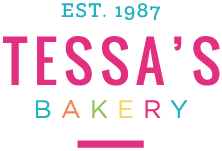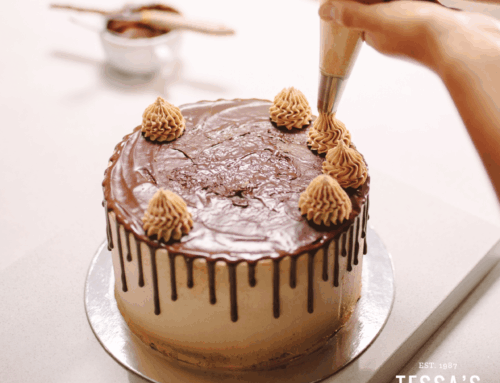Common Baking Mistakes and How to Avoid Them
Baking can be a fun and rewarding experience, but it’s not without its challenges. Whether you’re a beginner or a seasoned pro, we all make mistakes from time to time. However, understanding the common pitfalls can help you avoid them and achieve the perfect cake, cookies, or pastry every time. Let’s dive into some of the most common baking mistakes and how to avoid them.
1. Not Measuring Ingredients Properly
The Mistake: One of the most common—and frustrating—mistakes in baking is not measuring ingredients properly. Baking is a science, and even a small change in ingredient proportions can affect the final outcome. Using too much flour, not enough sugar, or incorrect amounts of baking powder can result in dense cakes or cookies that don’t rise properly.
How to Avoid It: Always measure ingredients accurately. Use dry measuring cups for flour and sugar, and liquid measuring cups for milk, water, or oil. Spoon the flour into the measuring cup and level it off with a knife instead of scooping directly from the container, which can pack the flour and lead to too much in your recipe.
2. Not Preheating the Oven
The Mistake: Skipping the preheating step may seem like a time-saver, but it can lead to uneven baking. Starting your cake or cookies in a cold oven means they’ll bake unevenly, potentially affecting the texture and overall appearance.
How to Avoid It: Always preheat your oven to the correct temperature before putting your goods inside. Most recipes list the temperature you need, so make sure to set it well in advance. Also, double-check that your oven is actually reaching the right temperature by using an oven thermometer, as many ovens can run hotter or cooler than the dial reads.
3. Using Cold Ingredients When You Shouldn’t
The Mistake: Some recipes, especially cakes, cookies, or pies, require ingredients like butter, eggs, and milk to be at room temperature. Using cold ingredients straight from the fridge can result in lumpy batters and uneven mixing, which leads to poor texture and spread.
How to Avoid It: Take out your butter, eggs, and other refrigerated ingredients about 30 minutes before you start baking to let them come to room temperature. If you’re in a hurry, you can soften butter in the microwave for a few seconds, but be careful not to melt it.
4. Overmixing the Batter
The Mistake: It’s tempting to mix your batter or dough until it’s perfectly smooth, but overmixing is one of the most common mistakes in baking. Overmixing the batter can cause too much air to be incorporated and overdevelop the gluten, leading to dense, heavy cakes or cookies instead of light and fluffy treats.
How to Avoid It: Mix ingredients until just combined, especially when adding flour. Stir the batter gently and only as much as necessary to incorporate the dry ingredients with the wet. For cookies, stop mixing once you can no longer see dry flour.
5. Not Following the Recipe
The Mistake: Baking isn’t like cooking—there’s less room for improvisation. Many bakers mistakenly think they can substitute ingredients or adjust measurements without thinking through the impact. This can result in a recipe that doesn’t turn out as expected.
How to Avoid It: Read the recipe thoroughly before you begin. Ensure you have all the ingredients and tools you need. If you do want to make substitutions, research the best alternatives or know how they’ll impact the texture or flavor of your bake.
6. Opening the Oven Door Too Early
The Mistake: One of the hardest parts about baking is resisting the urge to open the oven door while your cake, bread, or cookies are baking. However, opening the door too early can cause your cake to collapse, your cookies to spread too much, or your bread to deflate. This is because the sudden drop in temperature can affect the rise and structure of your bake.
How to Avoid It: Wait until your baked goods are near the end of the suggested baking time before opening the door to check. For cakes and breads, you can test doneness by inserting a toothpick—if it comes out clean, your bake is ready. For cookies, look for golden edges and firm centers.
7. Underbaking or Overbaking
The Mistake: Both underbaking and overbaking are common errors that can ruin your treats. Underbaking can leave your cakes soggy or undercooked in the center, while overbaking will dry out your cookies or cakes and make them hard or crumbly.
How to Avoid It: Use a timer and check your baked goods at the minimum recommended baking time. If you’re unsure, always check with a toothpick or cake tester—if it comes out clean or with a few crumbs, your item is ready. When baking cookies, watch them carefully and remove them from the oven when the edges are lightly golden, even if the centers seem soft.
8. Not Using the Right Type of Pan
The Mistake: Not all pans are created equal, and using the wrong type can affect the shape and texture of your baked goods. Dark-colored pans absorb more heat and may cause the edges of your cake or cookies to burn, while glass pans may not heat evenly.
How to Avoid It: Stick to the type of pan recommended in the recipe. If the recipe calls for a light-colored metal pan, use one with similar properties. If you’re using a different material, adjust your baking times and temperatures accordingly. You may need to reduce the temperature by 25°F if using a dark-colored pan.
9. Not Using Fresh Ingredients
The Mistake: Using expired baking powder, old flour, or stale yeast can prevent your baked goods from rising properly and can impact both flavor and texture. If your ingredients are past their prime, it’s likely that your cake or bread won’t turn out as expected.
How to Avoid It: Always check the expiration dates on your ingredients before using them, especially for leavening agents like baking powder, baking soda, and yeast. If you’re unsure, you can test the potency of baking powder by adding a little to water—if it bubbles, it’s still good!
10. Not Letting Your Bakes Cool Properly
The Mistake: When you take your cake or cookies out of the oven, it’s tempting to dive right in. But cutting or serving them too soon can result in crumbling, sticking, or them losing their shape. For example, cakes need time to set before they can be frosted, and cookies need time to firm up on the baking sheet.
How to Avoid It: Let your baked goods cool in the pan for at least 10-15 minutes before transferring them to a wire rack. This allows them to set and firm up, making it easier to frost or slice without causing a mess.
Conclusion: Learn from Your Mistakes!
Baking mistakes happen to the best of us, but with a little awareness, you can avoid these common pitfalls and improve your baking skills. The key to great baking is patience, precision, and understanding how ingredients and techniques work together.
The next time you’re in the kitchen, remember these tips and enjoy the process. After all, each mistake is just another opportunity to learn and perfect your craft!
Happy Baking!
At Tessa’s Bakery, we believe that even mistakes can be delicious—especially when you learn from them! Have you made any baking blunders that you’ve since fixed? Share your experiences in the comments below!







